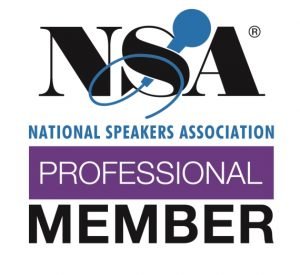“I know that you believe you understand what you think I said, but I’m not sure you realize that what you heard is not what I meant.”
Robert McCloskey
American Author
Effective communication can prevent disaster. A key part of effective communication is simply listening.
On March 27, 1977, at the Tenerife airport in the Canary Islands, a KLM 747 and a Pan Am 747 collided on the runway resulting in the loss of 583 lives. With the exception of the terrorist attacks on September 11, 2001, the Tenerife mishap was the worst disaster in aviation history. The official report lists communication as a major factor as both aircraft’s crews and the tower controller were unclear about each other’s intentions.
The disaster at Tenerife illustrates the difference between just talking and effective communication. That difference is often in how well we listen. The Tenerife investigation reveals four secrets to listening that will help you achieve more effective communication.
- Be present in the situation. A combination of deteriorating weather, time, and congestion at the airport seemed to cause the captain of the KLM aircraft to miss the fact that there was another aircraft on the runway in front of them. How often are we preoccupied with other concerns? It’s easy to let those other concerns overwhelm our ability to really hear what someone else is saying.
- Listen for what you don’t know. Because of fog at the Tenerife airport, the two mishap aircraft could not see each other. Though the controller thought everyone involved knew the Pan Am aircraft was on the runway, the KLM pilot did not realize the aircraft had not left the runway yet and did not ask to clarify its position.
- Don’t be a passive listener! Ask questions to avoid uncertainty. Repeat back to make sure you really understand the message. After receiving instructions from air traffic controllers, pilots repeat back what they heard to ensure they have it right. How often do you do that? At the critical point in the Tenerife mishap, the KLM pilot and the tower controller used the same language, but meant very different things. The controller thought the pilot meant he was in position to take off while the pilot thought the controller had cleared him for take-off. While the transcripts seem to indicate the confusion, and one crew member even asked a question, there was no further attempt by the pilot or controller to clarify the instructions.
- Make sure you’re really speaking the same language. In the Tenerife mishap, the controller was Spanish, the KLM crew was Dutch, and the Pan Am crew was American. All parties involved were speaking English, the international language of aviation, but none of them were completely sure what the others were doing. In the Tenerife mishap, the KLM pilot said the words, “at takeoff.” The controller took this to mean the aircraft was in position for takeoff, but the pilot meant he was starting the takeoff roll. During the investigation, almost none of a team of Dutch, American, and Spanish experts understood the pilot meant he was starting down the runway. If you don’t understand the words someone else is using, ask for clarification.
Listening is critical to effective communication but is often overlooked. Leaders who fail to listen often head off in the wrong direction, solving the wrong problems and sometimes creating new ones.
Are you an effective communicator or is a disaster in your future?
 Bob Mason is dedicated to leadership development. He works with companies to solve problems by helping supervisors and managers become more effective leaders leading more productive teams. He is a professional speaker and author of Don’t Worry, You Can Do This: What New Supervisors and Managers Need to Know About Leadership; The Art of Not Motivating: How Leaders Can Succeed by Understanding the True Nature of Motivation; Balancing the Generations: A Leader’s Guide to the Complex, Multi-Generational, 21st Century Workplace; and Planning to Excel: Strategic Planning That Works.
Bob Mason is dedicated to leadership development. He works with companies to solve problems by helping supervisors and managers become more effective leaders leading more productive teams. He is a professional speaker and author of Don’t Worry, You Can Do This: What New Supervisors and Managers Need to Know About Leadership; The Art of Not Motivating: How Leaders Can Succeed by Understanding the True Nature of Motivation; Balancing the Generations: A Leader’s Guide to the Complex, Multi-Generational, 21st Century Workplace; and Planning to Excel: Strategic Planning That Works.
A 30-year career in the U.S. Air Force exposed him to great leaders and leadership opportunities such as command of four squadrons, including the Air Force’s largest munitions squadron. He has studied leadership extensively, but more importantly has been there, working with real people, making hard decisions, and experiencing the results.
Contact Bob at Bob@BobMasonSpeaker.com or 505-453-5266




